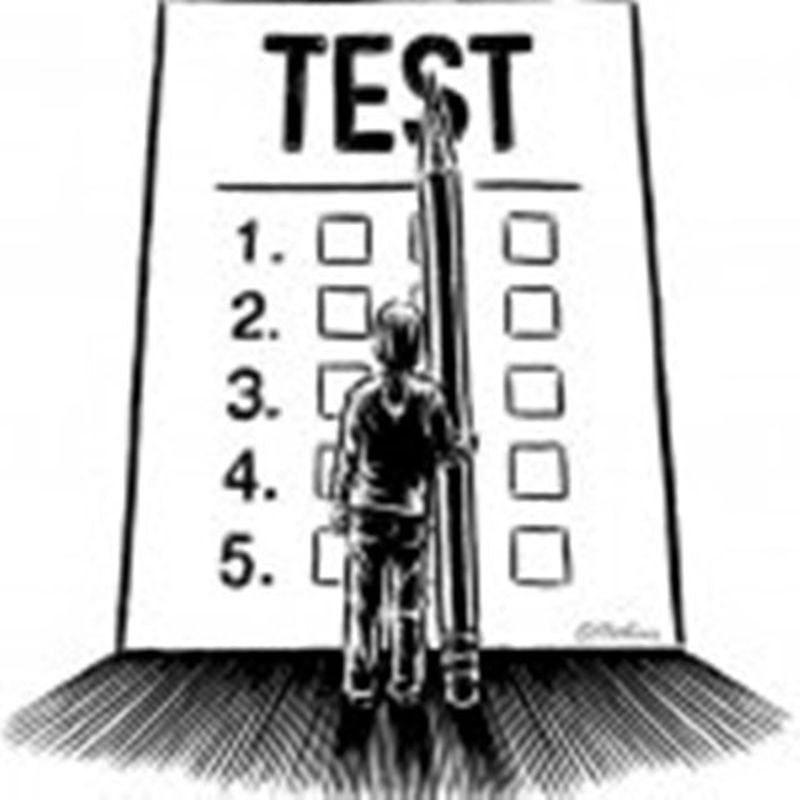I asked Jim Arnold, former Pelham City Schools superintendent, what he thinks of the bills in the General Assembly addressing teacher evaluations.
Here is his response:
By Jim Arnold
My dad was a police officer for 26 years in Jackson, Miss. My brothers and I were subject to almost daily interrogations from a trained professional. Partly because he controlled the car keys and the family finances and partly because we had a healthy respect for his occasional use of corporal punishment, we were denied the use of our Fifth Amendment rights concerning self-incrimination.
We did, however, learn from our mistakes, and became experts at answering his questions in ways that did not, at least too much, incriminate us and our teenage friends. We also became, through observation of and participation in dad’s investigative techniques, experts at detecting bovine scatology when we heard it. He once pointed to a newspaper story of a Mississippi politician who proposed a 75 percent raise for members of the Legislature. Public outcry was immediate and overwhelmingly negative, so a second politician came immediately to his colleagues’ defense.
Credit: Maureen Downey
Credit: Maureen Downey
“My friends, in these difficult economic times when so many families in our state are struggling to make ends meet, I say there is no justification for our Legislators to receive a 75 percent raise. Therefore, I propose that we save hundreds of thousands of dollars for the citizens of our state by cutting that proposed raise to not a dime more than 25 percent. That is the only way I could, in good conscience, support such a measure when our state is faced with the harsh reality of the current economic situation.” We immediately saw the lesson our dad was trying to teach us.
The story shows how public figures can make bad ideas more palatable for the public, but regardless of how you present it, a bad idea is a bad idea no matter the degree to which it is implemented.
Cutting the percentage that student test scores count from 50 percent to 30 percent for public school teachers and from 70 percent to 40 percent for principals is a good idea but does not solve the problem. The real issue here is the Georgia Legislature has allowed student test scores any place in evaluations of public school educators.
Consider this statement from the American Statistical Association “Statement on Using Value-Added Models for Educational Assessment” April 8, 2014, Executive Summary:
“VAMs are generally based on standardized test scores, and do not directly measure potential teacher contributions toward other student outcomes. VAMs typically measure correlation, not causation: Effects – positive or negative – attributed to a teacher may actually be caused by other factors that are not captured in the model. Under some conditions, VAM scores and rankings can change substantially when a different model or test is used, and a thorough analysis should be undertaken to evaluate the sensitivity of estimates to different models. VAMs should be viewed within the context of quality improvement, which distinguishes aspects of quality that can be attributed to the system from those that can be attributed tom individual teachers, teacher preparation programs, or schools. Most VAM studies find that teachers account for about 1% to 14% of the variability in test scores, and that the majority of opportunities for quality improvement are found in the system-level conditions. Ranking teachers by their VAM scores can have unintended consequences.”
So while Senate Bill 364 and House Bill 1061 mitigate the effect of a bad idea, they don't remove it completely. These two bills simply make a poor initial decision to include value added measures in teacher evaluations, one made without any research supportive of such a position and made to serve a political end rather than an educational one, a little more palatable to teachers. Test scores are excellent determinants of where and who you teach. They are worse than useless at anything else.
There are several excellent ideas in State Rep. Tom Dickson's House Bill 1061 that teachers can support. The idea of experienced teachers serving as mentors for their less experienced colleagues is a proven best practice method already employed by successful schools and systems. His idea of improving instruction and leadership rather than punishing behavior works with students and will work with teachers and administrators also.
Consider these points from Finland:
•There are no mandated standardized tests in Finland, apart from one exam at the end of students’ senior year in high school.
•There are no rankings, no comparisons or competition between students, schools or regions. Finland’s schools are publicly funded.
•The people in the government agencies running them, from national officials to local authorities, are educators, not business people, military leaders or career politicians.
•Every school has the same national goals and draws from the same pool of university-trained educators. The result is that a Finnish child has a good shot at getting the same quality education no matter whether he or she lives in a rural village or a university town.
Perhaps the key to turning evaluations into an effective and efficient tool for improving teaching and learning can be found in a suggestion from the spouse of an elementary principal in Georgia: “The state Legislature and the DOE need to stop micromanaging the process…”
I would add that involving teachers in the process of determining educational policy would seem to be a common sense item that has all too often been ignored by the governor and the Georgia Legislature.
I am glad Rep. Dickson, a former teacher, principal and school superintendent, has a place at the table of educational policy making. I would hope that more legislators seek the opinions and advice of Georgia’s teachers when formulating educational policies. Until then, it would appear that the beatings will continue until morale improves.







